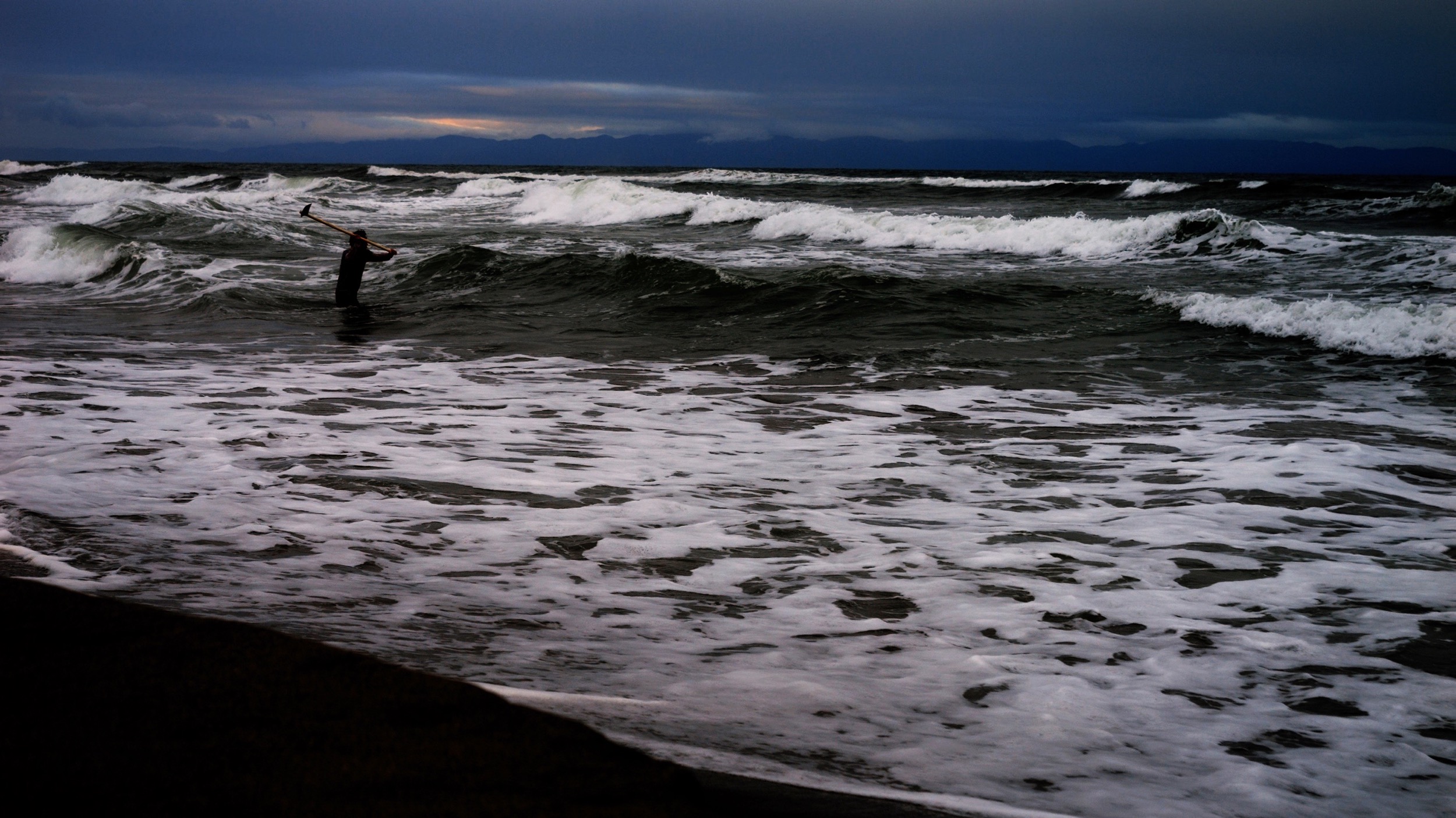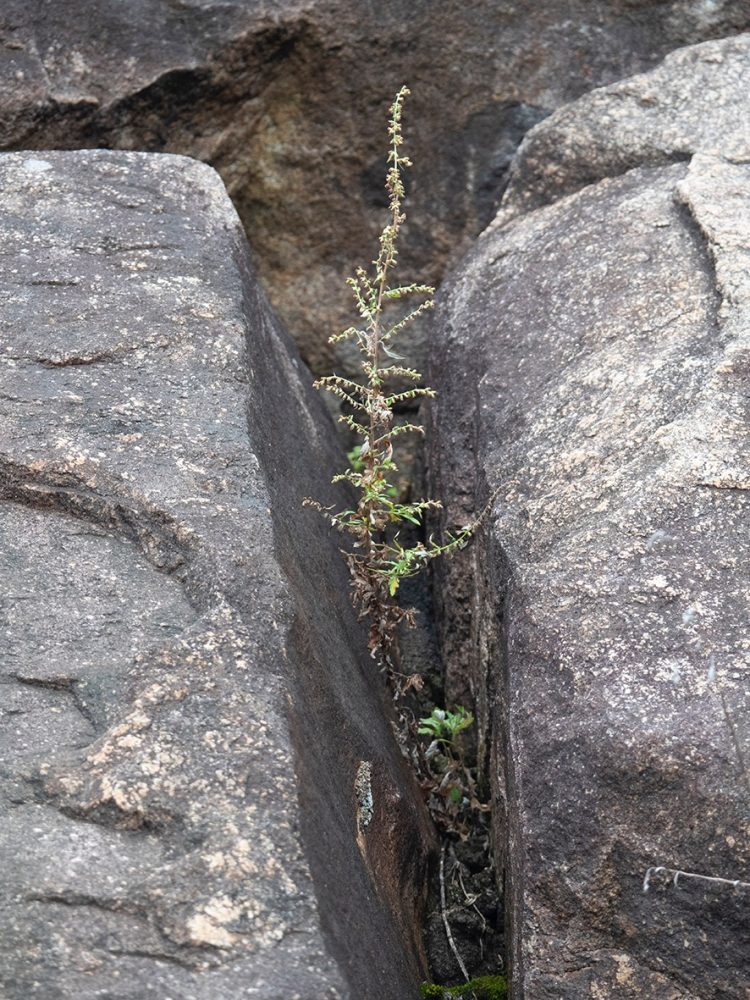
Ishu Han
Solo Exhibition
Cultivating the Waves
2024.9.21 (Sat.) - 10.19 (Sat.)
Opening hours:12:00 – 18:00
Closed on Sundays, Mondays, and holidays
Opening reception: 21 September (Sat.), 2024, 17:00 – 19:00
Talk event: 5 October (Sat.), 2024, 18:00 – 19:30
Speakers:Ishu Han, Akiko Miki (Curator)
*We will be open until 20:00 at the last day 10.19 (Sat.) .
We at ANOMALY are pleased to announce the upcoming solo exhibition of works by the artist Ishu Han. Titled Cultivating the Waves, the exhibition will run from September 21 (Sat.) to October 19 (Sat.), 2024.

Ishu Han was born in Shanghai in 1987, and moved with his family to Aomori in his childhood. His activities are currently based in Tokyo. He continues to explore the dynamics unfolding between society and the individual, the connections of mutual influence between one individual and others, and the identity germinating from them. Applying his varied powers of expression, he utilizes diverse media including photos, objects, performances, and paintings as well as videos and installations. He is energetically showing works at numerous exhibitions inside and outside Japan, and is one of the young artists attracting great attention on the contemporary art scene.
This exhibition displays Cultivating the Waves – Sea of Japan, the newest work from his signature video series made by shooting performances with the sea by Han himself, from a fixed point. In this work, Han can be seen wielding a hoe and “digging” into the waves with it. Lacking solidity, the waves naturally cannot be hoed like earth, and the video shows Han physically intervening in the surf and repeatedly engaging in this endless labor. Are the waves that regularly roll in shaping (= cultivating) the artist himself, just as they erode and shape the rocks and crags? Like “culture,” the word “cultivate” comes from the Latin word colere, which also has the meanings of “inhabit,” “worship,” and “protect” as well as “cultivate.” The labor of cultivation is linked to human settlement and participation in the community through farming. Han once made the following comment.
In my work, I have expressed participation in different societies through interventions in unfamiliar landscapes. In this context, the sea is both a landscape and a boundary that separates and connects this side that I am seeing, and the other side that cannot be seen. That is why I have portrayed my own life heading towards this place, the sea. The body facing the sea is a human being defying the forces of nature, and an individual defying the politics created by society. For me, this uninhabitable place has become a place of belonging through the act of creating my work. The videos, which last but a few minutes, record the body as it lives in the cropped landscape, as if writing a diary.

“Everywhere Gather Yourself Stand” Installation view at SCAI PIRAMIDE, Tokyo(2022), photo: Omote Nobutada
In When a Dictionary Studies Words, another new work shown for the first time at this exhibition, the audio from a family video made by Han can be heard from a dictionary. From the audio, we can recognize the sounds and voices preceding speech by an infant. The voices here are not of the sort that can be verbalized (totalized) in a dictionary; they are “exclusively ours.” The world is constructed by a baby’s cry at birth, laughing, weeping, cheering, shouting, and many other vocal expressions that definitely cannot be compiled in a dictionary or otherwise systemized. The dictionary, a system of language, has its totality broken down. Its appearance is that of an object accompanied by extremely private sounds, left just as they are. The dictionary looks almost as if it is learning new words by itself.

This exhibition will also feature Han’s reconstruction of Time and Space / Isamu Noguchi, 1989, which was originally shown in 2022 at the Takamatsu Contemporary Art Annual vol.10, There is No Border Line Here./? at Takamatsu Art Museum. This work consists of a series of photographs of plants growing naturally around the outdoor stonework sculpture by Noguchi that still stands near Takamatsu Airport. Indian lettuce, Conyza sumatrensis, buttercup oxalis, weeping love grass, Japanese pampas grass, Formosa lily, ailanthus, southern crabgrass, mugwort, and other species of plants are hardily growing in the narrow gaps between stones. Han places vegetation living on this work of art, independent of the Noguchi’s intentions, at the center of this series. By so doing, he prompts us to think about what we call “art” and its territoriality. In contrast to stones, which are durable and last semi-permanently, these plants grow from seeds that are carried farther away by the wind, animals, people, or other media. They travel as annuals, biennials, or perennials, intermingle, and continue to change in order to adapt to the environment. Generally, they are collectively called “weeds,” and are ordinarily uprooted and removed in the process of environmental conditioning. By directing our attention to their existence, Han looks into the possibility of sharing things that are not visible in the structure.

“Border Crossings: New Perspectives through Works from the Collection and Guest Artists”
Installation view at Kyoto Seika University Gallery Terra-S, Kyoto (2022), photo: Omote Nobutada
Han asks how we as individuals can commit to the totality possessed by each motif. In his unswerving attitude, we sense a desire to consciously work on the subject instead of keeping a distance from it, and an active determination to undo and redo rigid structures until they can be read as personal ones. As contemporary society becomes more complex, connection among individuals is becoming more and more widespread. At the same time, as if in reaction, violence and inflammatory speech and behavior in search of simple answers are becoming more prevalent. In this society, Han is attempting to probe the possibilities of remaining subjective in the face of the whole as opposed to being swallowed up by it. We would be delighted if this exhibition motivates all who see it to soundly cultivate their soil for living, and are looking forward to seeing all of you there.
During the run of this exhibition, we are planning to hold a talk event with the curator Akiko Miki and Han. We urge you to hear the substantial conversation between the curator and the artist, who collaborated in two exhibitions at the Hirosaki Museum of Contemporary Art, an exhibition at Fukutake House on Shodoshima, and an art project in China’s Shandong Province.
We should add that Han will also be showing works at two upcoming group exhibitions: Home Sweet Home at the Marugame Genichiro-Inokuma Museum of Contemporary Art and the 11th Asia Pacific Triennale of Contemporary Art (APT11) at the Queensland Art Gallery (Brisbane, Australia), beginning on October 12 and November 30, respectively. We hope you will attend these as well.
[1] MOT Annual 2021, A sea, a living room and a skull, Museum of Contemporary Art Tokyo, 2021, p.035.
Born in Shanghai, 1987. Lives and works in Tokyo.
Ishu Han is an incredibly promising young artist. Through his own perspective, he addresses questions regarding the complex relationship between individuals and society and the confusion caused by such relations. With sincerity, and sometimes with humor, Han speaks to viewers through a range of media – installation, photography, paintings, and video – in which he uses his own body or everyday items.
He has participated in numerous exhibitions, including “Asia Anarchy Alliance” (Kuandu Museum of Fine Arts, Taipei, 2014), “Whose game is it?”, (Royal College of Art Gallery, London, 2015), “In the Wake – Japanese Photographers Respond to 3/11” (Museum of Fine Arts, Boston, 2015, and the Japan Society, New York, 2016), “Sights and Sounds: Highlights” (Jewish Museum, New York, 2016), “The Drifting Thinker” (solo exhibition, MoCA Pavilion, Shanghai in 2017), “Publicness of the Art Center” (Contemporary Art Center, Art Tower Mito, 2019), “Thank You Memory” (Hirosaki Museum of Contemporary Art, 2020) , “Apple Cycle / Cosmic Seed” (Hirosaki Museum of Contemporary Art, 2021), “MOT Annual 2021 A sea, a living room and a skull” (Museum of Contemporary Art Tokyo, 2021), “Memories Penetrate the Ground and Permeate the Wind Contemporary Japanese Photography vol.18” (Tokyo Photographic Art Museum, 2021-2022), “Countermeasures Against Awkward Discourses: From the Perspective of Third Wave Feminism” (21st Century Museum of Contemporary Art, 2021-2022), “Roppongi Crossing 2022: Coming & Going” (Mori Art Museum, 2022) and “Home Sweet Home” (The National Museum of Art, Osaka, 2023). He won the Grand Prix at the Nissan Art Award 2020.